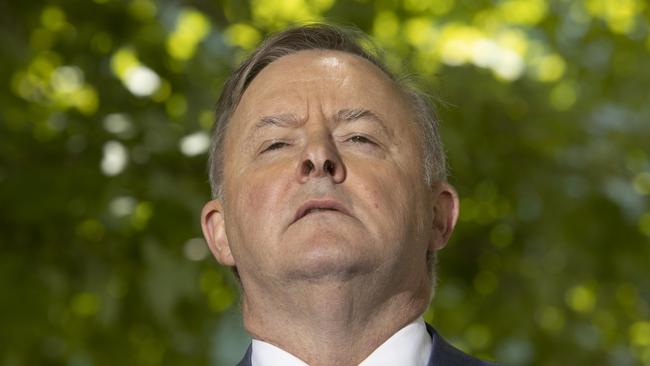
For the party, the stakes are even higher. The trends suggest the ALP faces an ongoing struggle to win enough of the population to remain an electorally competitive force at the federal level unless key changes are made now.
The Newspoll analysis tells the story — the vote is too narrow. It rests too heavily on the state of Victoria, younger Australians, low income earners, women and atheists. The pathway to victory is shrinking. And the task will only get harder for future leaders if no progress is made to renovate and expand the support base.
This points to an existential problem for Labor.
Major inroads must be made in the resources states with Labor facing a primary vote of 29 per cent in Queensland and 32 per cent in Western Australia. The only age bracket in which Labor beats the Coalition on primary is the 18-34 category and the Coalition is ahead among families once household income exceeds $50,000. Among over 65s, a growing and important political demographic, the Coalition enjoys a primary vote of 55 per cent to Labor’s 31 per cent.
A growing religious divide is also working against Labor with people of faith abandoning the party in droves.
The national convulsion inflicted by the pandemic and recession has focused voter concerns on health, jobs and the economy and worked to Scott Morrison’s advantage. It has left Albanese struggling to stay relevant in the debate alongside the national cabinet which has elevated the importance of the state premiers.
But Albanese must use the upheaval to push ahead with the development of fertile new constituencies for Labor. Flashes of this approach were evident in the Budget reply when Albanese unveiled a $6.2bn childcare policy aimed at wealthier Australians, declaring he was “cutting costs for 97 per cent of all families in the system.”
More serious changes in policy and presentation are required. And Albanese may prove unwilling or be prevented from doing much more by the usual resistance to change. The last minute insertion into the draft ALP policy platform of a medium term emissions reduction target exemplified this internal conflict and risks consigning Albanese to repeating the mistakes of the 2019 election.
Newspoll also shows that Albanese must do better among the key groups he is already targeting, including women and lower income earners.
In 2017, when the nation held a non-compulsory vote on same sex marriage, 4.87 million Australians voted no. Though little noted, that was greater than the total number of people who voted for Labor at the compulsory 2019 election.
In 2019, 4.75 million Australians gave their first preferences to Labor and 5.9 million voted for the Coalition. Albanese’s challenge is to try and close that gap.




The lethal warning in Newspoll for Anthony Albanese is that he must broaden Labor’s appeal or risk losing the next election.